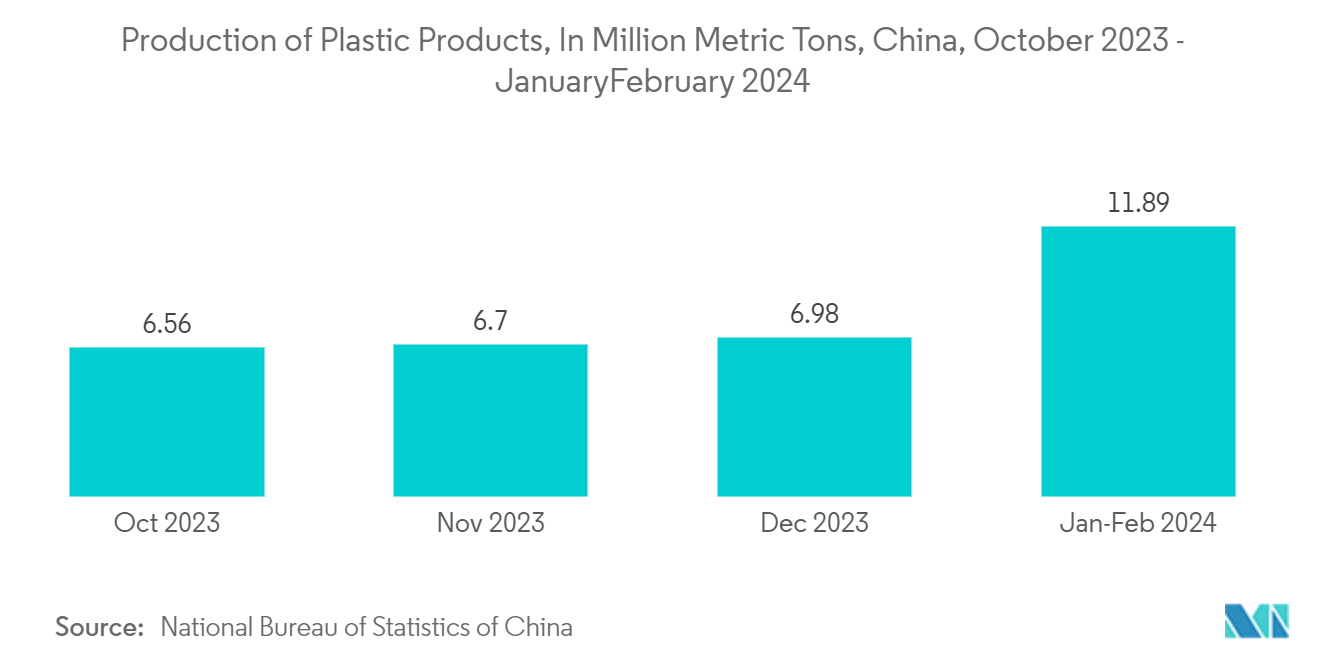Market Trends of Pharmaceutical Plastic Packaging Industry
Increasing Adoption of Polyethylene Terephthalate (PET) Packaging for Pharmaceutical Products
- Polyethylene terephthalate (PET), a member of the polyester family, is a clear, strong, and safe plastic. It is non-toxic and non-carcinogenic, making it ideal for pharmaceutical packaging. PET protects against CO2 and light and repels microorganisms. The EU, NSF, and FDA also approve it.
- PET's lightweight nature and glass-like appearance make it visually appealing. It is also strong, non-reactive, and shatterproof, ensuring high pharmaceutical safety standards. PET is also recyclable, supporting environmental sustainability. Its lightweight, durable, and recyclable combination makes PET a top choice for pharmaceutical packaging, ensuring the safety and integrity of medicines.
- Over the years, PET has become a leading plastic known for its safety and quality. It is widely used in packaging liquid oral medications, especially for children and the elderly. PET's unique features highlight its growing importance in the pharmaceutical sector.
- Packaging manufacturers are focusing on offering innovative PET packaging solutions to cater to the growing demand for sustainable plastic packaging in the pharmaceutical sector. For instance, in January 2024, Bormioli Pharma SpA announced the launch of an innovative pharmaceutical packaging bottle made from 100% recycled virgin PET resin along with the partnership of Loop Industries Inc. This will help the company cater to the growing adopting of sustainable practices and materials to reduce its environmental impact in the pharmaceutical sector.
- Additionally, PET can reduce weight by up to 90% compared to glass, lowering transportation costs. PET plastic bottles replace heavier glass bottles in the pharmaceutical industry, offering a reusable solution for various liquid products. For example, China's plastic product production increased significantly, from 6.56 million metric tons in October 2023 to 11.89 million in January/February 2024. This increase is mainly due to the rising demand for plastic packaging in the pharmaceutical sector.

China and India's Healthcare Reforms Drive Growth in Pharmaceutical Plastic Packaging
- China's thriving pharmaceutical sector offers numerous opportunities for pharmaceutical plastic packaging companies. The Chinese government's ongoing healthcare reforms are set to amplify this sector's expansion. The demand for sophisticated packaging solutions is rising with a growing emphasis on drug safety and compliance. Moreover, as China's population ages and chronic diseases become more prevalent, the consumption of pharmaceuticals is expected to surge, directly boosting the need for pharmaceutical plastic packaging.
- Chinese pharmaceutical packaging firms are increasingly investing in in-house R&D teams. This move aims to explore advanced, eco-friendly, secure, and sustainable packaging materials and products. This strategic shift and a surge in innovation, partnerships, acquisitions, and drug production elevate the market's value.
- For instance, the Sanner Group is a leader in healthcare packaging and medical components. In November 2023, the company expanded its footprint in the Asia-Pacific by launching a state-of-the-art manufacturing plant in Kunshan, China. Covering 18,000 m2, with 4,000 m2 dedicated to production, the facility meets Class D clean room standards, ensuring GMP-compliant manufacturing for drug delivery devices and medical packaging.
- Also, India's healthcare reforms, notably the Production Linked Incentive (PLI) scheme, are pivotal in driving market growth. This scheme, a cornerstone of India's self-reliance initiative (Atmanirbhar Bharat), underscores the nation's push for local manufacturing. These initiatives drive India's pharmaceutical plastic packaging market with a heightened focus on regulatory compliance and recycling.
- India's commitment to bolstering healthcare infrastructure and its increased investments in the pharmaceutical sector further solidify the market's growth trajectory. According to the Organisation of Pharmaceutical Producers of India, the pharmaceutical industry was valued at USD 49 billion in 2022. Projections suggest this figure could soar to USD 130 billion by 2030 and an impressive USD 450 billion by 2047, offering a promising outlook for the pharmaceutical plastic packaging market.


